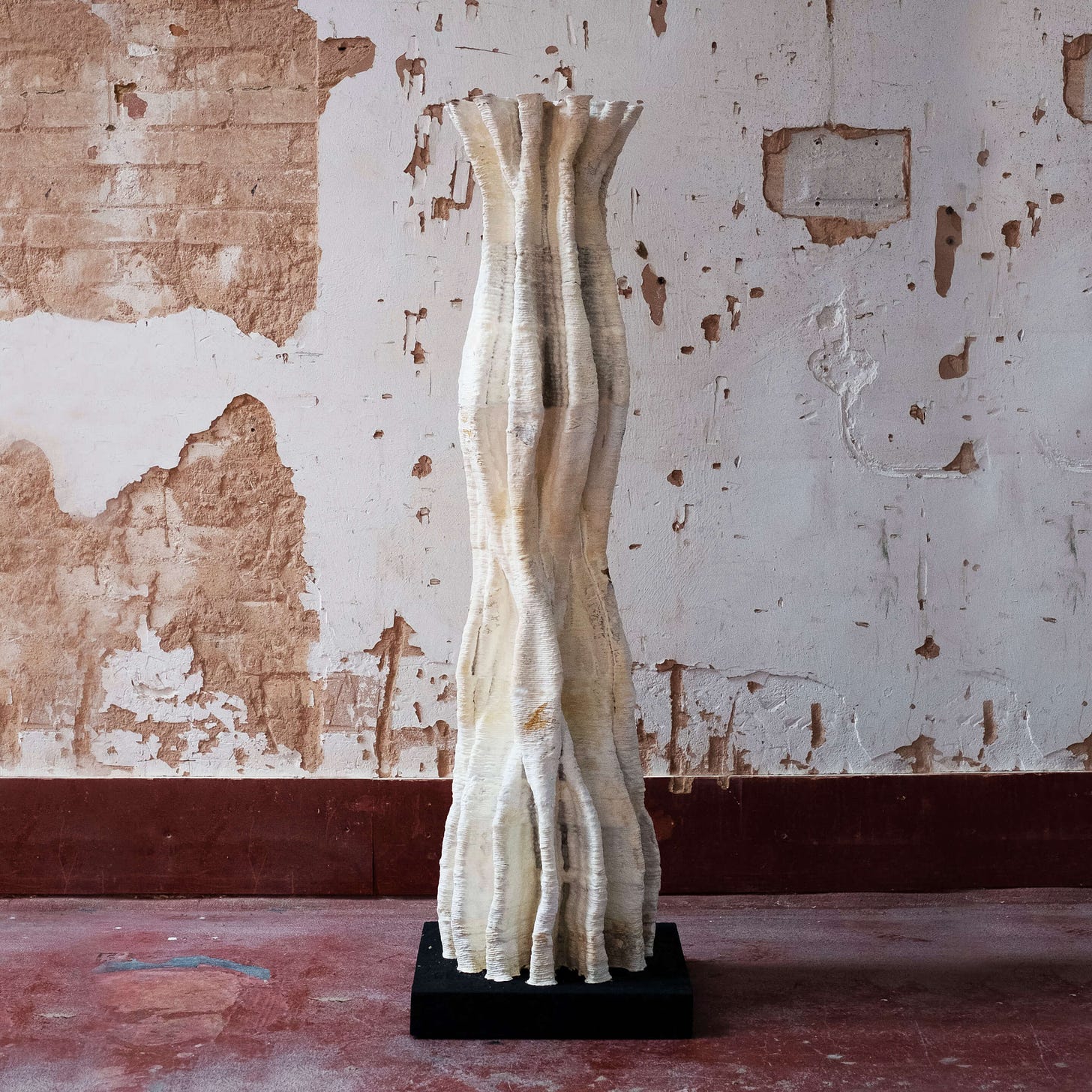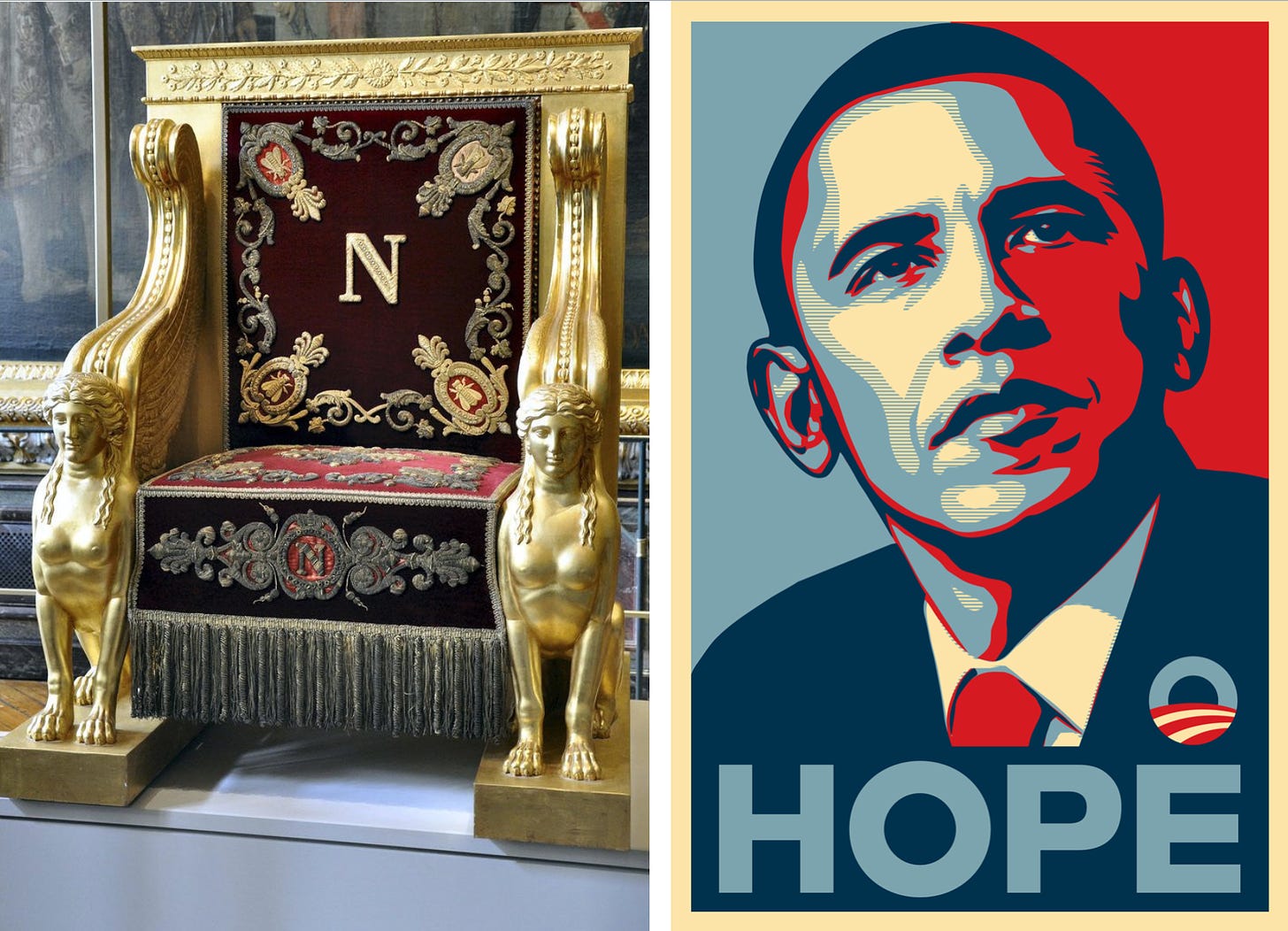This essay was first published at The Pathos of Things newsletter. Subscribe here.
In Britain, where the saying goes that every man’s home is his castle, we like to see domestic space as something to be improved. Even if we have to save until middle age to own a decent home, we do so, in part, so that we can hand it over to builders for six months, after which there will be fewer carpets and more sunrooms.
But domestic space is also a medium through which external forces shape us, in what we mistakenly consider our private existence. Nothing illustrates this better than the evolution of the modern kitchen.
In one of my favourite essays, former Design Museum director Deyan Sudjic describes how the British middle-class kitchen was transformed over the course of a century, from the early 1900s until today. Beginning as a “no-man’s land” where suburban housewives maintained awkward relations with their working-class servants, it has become “a domestic shrine to the idea of family life and conviviality.” Whereas the kitchen’s association with work and working people once ensured that it was partitioned, physically and socially, from the rest of the home, today the image of domestic bliss tends to centre on a spacious open-plan kitchen, with its granite-topped islands, its ranks of cupboard doors in crisp colours, its barstools and dining tables.
And in the process of being transformed, the kitchen transformed us. The other thing we find in this space today is an assortment of appliances, from toasters and kettles to expensive blenders and coffee machines, reflecting a certain admiration for efficiency in domestic life. This does not seem so striking in a world where smartphones and laptops are ubiquitous, but as Sudjic points out, the kitchen was the Trojan horse through which the cult of functionality first penetrated the private sphere.
A hundred years ago, sewing machines and radios had to be disguised as antique furniture, lest they contaminate the home with the feeling of a factory. It was after the middle-classes began to occupy the formerly menial world of the kitchen that everyday communion with machines became acceptable.

In its most idealised and affluent form, the contemporary kitchen has almost become a parody of the factory. Labour in conditions of mechanised order – the very thing the respectable home once defined itself against – is now a kind of luxury, a form of self-expression and appreciation for the finer things in life. We see the same tendency in the success of cooking shows like Master Chef, and in the design of fashionable restaurants, where the kitchen is made visible to diners like a theatre.
What paved the way for this strange marriage of the therapeutic and the functional was the design of the modern kitchen. During this process, the kitchen was a stage where history’s grand struggles played out on an intimate scale, often refracted through contests over women’s role in society. The central theme of this story is how the disenchanting forces of modern rationality have also produced enchanting visions of their own, visions long associated with social progress but eventually absorbed into the realm of private aspiration.
The principles underpinning the modern kitchen came from the northern United States, where the absence of servants demanded a more systematic approach to domestic work. That approach was defined in the mid-19th century by Catharine Beecher, sister of the novelist Harriet Beecher Stowe. In her hugely popular Treatise on Domestic Economy, addressed specifically to American women, Beecher gave detailed instructions on everything from building a house to raising a child, from cooking and cleaning to gardening and plumbing. Identifying the organised, self-contained space of the ship’s galley as the ideal model for the kitchen, she provided designs for various labour-saving devices, setting in motion the process of household automation.
Beecher promoted an ethic of hard work and self-denial that she derived from a stern Calvinist upbringing. Yet she was also a leading campaigner for educational equality, establishing numerous schools and seminaries for women. Her professional approach to household work was an attempt, within the parameters of her culture, to give women a central role in the national myth of progress, though its ultimate effect was to deepen the association of women with the domestic sphere.
Something similar could be said about Christine Frederick, a former teacher from Boston, who in the early-20th century took some of Beecher’s ideas much further. Frederick’s faith was not Calvinism but the Taylorist doctrines of scientific management being implemented in American factories. What she called “household engineering” involved an obsessive analysis and streamlining of tasks as mundane as dishwashing. “I felt I was working hand in hand with the efficiency engineers in business,” she said, “and what they were accomplishing in industry, I too was accomplishing in the home.”
By this time Europe was ready for American modernity in the household, as relations between the classes and sexes shifted radically in the wake of the First World War. Women were entering a wider range of occupations, which meant fewer wives at home and especially fewer servants. At the same time, the provision of housing for the working class demanded new thinking about the kitchen.

In the late-1920s one of Christine Frederick’s disciples, the Austrian architect Margarete Schütte-Lihotzky, designed perhaps the most celebrated kitchen in history. The Frankfurt kitchen, as it came to be known, was one of many efforts at this time to repurpose the insights of American industry for the cause of socialism, for Schütte-Lihotzky was an ardent radical. She would, during her remarkably long life, offer her skills to a succession of socialist regimes, from the Soviet Union to Fidel Castro’s Cuba, as well as spending four years in a concentration camp for her resistance to Nazism.
For the Modernist architects among whom Schütte-Lihotzky worked in the 1920s, the social and technical challenge of the moment was the design of low-cost public housing. Cash-strapped government agencies were struggling to provide accommodation for war widows, disabled veterans, pensioners and slum-dwelling workers. It was for a project like this in Frankfurt that Schütte-Lihotzky produced her masterpiece, a compact, meticulously organized galley kitchen, offering a maximum of amenities in a minimum of space.
By the end of the decade, different versions of the Frankfurt kitchen had been installed in 10,000 German apartments, and were inspiring imitations elsewhere. Its innovations included a suspended lamp that moved along a ceiling runner, a height-adjustable revolving stool, and a sliding door that allowed women to observe their children in the living area. It was not devoid of style either, with ultramarine blue cupboards and drawers, ochre wall tiles and a black floor. Schütte-Lihotzky would later claim she designed it for professional women, having never done much cooking herself.
The Frankfurt kitchen was essentially the prototype of the fitted kitchens we are familiar with today, but we shouldn’t overlook what a technological marvel it represented at the time. Across much of working class Europe, a separate kitchen was unheard of (cooking and washing were done in the same rooms as working and sleeping), let alone a kitchen that combined water, gas and electricity in a single integrated system of appliances, workspaces and storage units.

But even as this template became a benchmark of modernity and social progress in Europe, the next frontier of domestic life was already appearing in the United States. During the 1920s and 30s, American manufacturers developed the design and marketing strategies for a full-fledged consumer culture, turning functional household items into objects of desire. This culture duly took off with the economic boom that followed the Second World War, as the kitchen became the symbol of a new domestic ideal.
With the growth of suburbia, community-based ways of life were replaced by the nuclear family and its neighbours, whose rituals centred on the kitchen as a place of social interaction and display. The role of women in the home, firmly asserted by various cultural authorities, served as a kind of traditional anchor in a world of change. Thanks to steel-beam construction and central heating, the kitchen could now become a large, open-plan space. It was, moreover, increasingly populated by colourful plastic-laminated surfaces, double cookers, washing machines and other novel technologies. Advertisers had learned to target housewives as masters of the family budget, so that huge lime green or salmon pink fridges became no less a status symbol than the cars whose streamlined forms they imitated.
Despite their own post-war boom, most Europeans could only dream of such domestic affluence, and dream they did, for the mass media filled their cinema and television screens with the comforts of American suburbia. This was after all the era of the Cold War, and the American kitchen was on the front line of the campaign to promote the wonders of capitalism. On the occasion of the 1959 American National Exhibition in Moscow, US vice-president Richard Nixon got the chance to lecture Soviet premier Nikita Khrushchev on the virtues of a lemon yellow kitchen designed by General Electric.
In this ideological competition, the technologies of the modern kitchen were still assumed to represent an important form of social progress; Nixon’s PR victory in the Moscow “kitchen debate” was significant because Khrushchev himself had promised to overtake the United States in the provision of domestic consumer goods. This battle for abundance was famously one that Communism would lose, but by the time the Soviet challenge had disappeared in the 1990s, it was increasingly unlikely that someone in the west would see their microwave as emblematic of a collective project of modernity.

Perhaps capitalism has been a victim of its own success in this regard; being able to buy a Chinese manufactured oven for a single day’s wages, as many people now can, makes it difficult to view that commodity as a profound achievement. Yet there is also a sense in which progress, at least in this domain, has become a private experience, albeit one that tends to emerge from a comparison with others. The beautiful gadgetsthat occupy the contemporary home are tools of pleasure and convenience, but also milestones in the personal quest for happiness and perfection.
The open-plan kitchen descended from mid-century America has become a desired destination for that quest in much of the developed world, even if it is often disguised in a local vernacular. It is no coincidence that in 1999, such a kitchen featured in the first episode of Grand Designs, the show which embodies the British middle-class love affair with domestic improvement. But the conspicuous efficiency and functional aesthetics of today’s kitchen dream show that it is equally indebted to Margrete Schütte-Lihotzky’s utopian efforts of the 1920s. This is a cruel irony, given that for most people today, and most of them still women, working in the kitchen is not a form of mechanised leisure but a stressful necessity, if there is time for it at all.
Then again, Schütte-Lihotzky is part of a longer story about the modern world’s fascination with rational order. When Kathryn Kish Sklar writes about Catharine Beecher’s kitchen from the 1850s, she could equally be describing the satisfaction our own culture longs to find in the well-organised home: “It demonstrates the belief that for every space there is an object, for every question an answer. It speaks of interrelated certainties and completion.”
This essay was first published at The Pathos of Things newsletter. Subscribe here.







